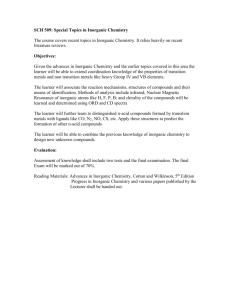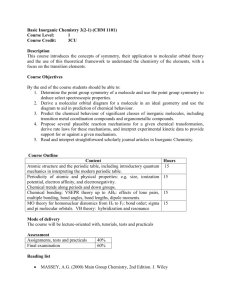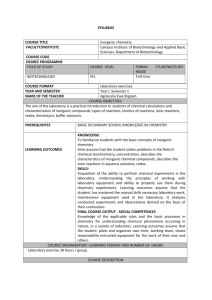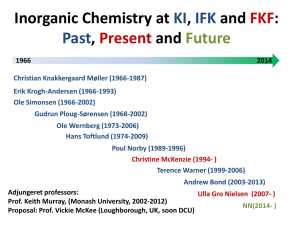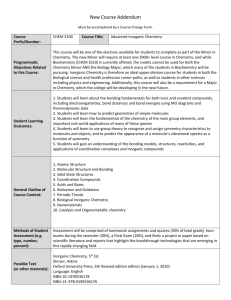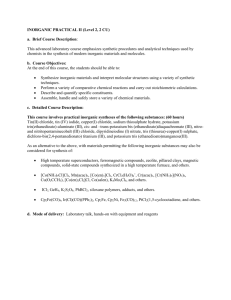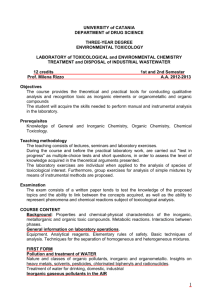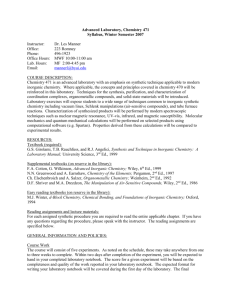UNIVERSITY OF PLYMOUTH MODULE RECORD MODULE CODE
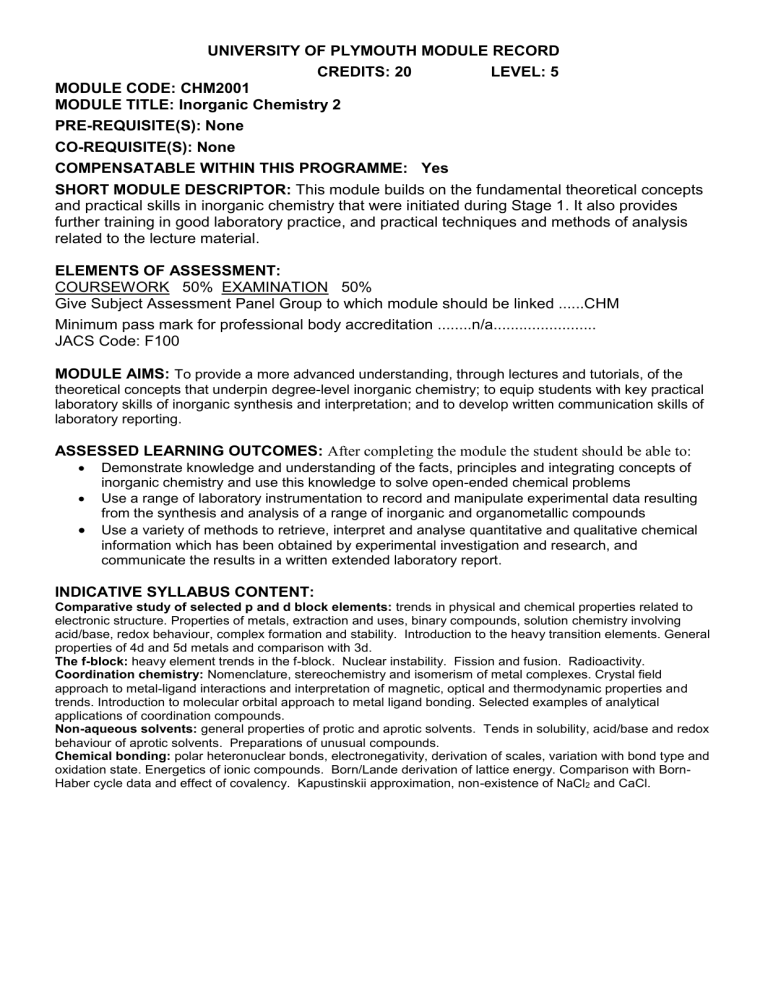
UNIVERSITY OF PLYMOUTH MODULE RECORD
MODULE CODE: CHM2001
CREDITS: 20
MODULE TITLE: Inorganic Chemistry 2
LEVEL: 5
PRE-REQUISITE(S): None
CO-REQUISITE(S): None
COMPENSATABLE WITHIN THIS PROGRAMME: Yes
SHORT MODULE DESCRIPTOR: This module builds on the fundamental theoretical concepts and practical skills in inorganic chemistry that were initiated during Stage 1. It also provides further training in good laboratory practice, and practical techniques and methods of analysis related to the lecture material.
ELEMENTS OF ASSESSMENT:
COURSEWORK 50% EXAMINATION 50%
Give Subject Assessment Panel Group to which module should be linked ......CHM
Minimum pass mark for professional body accreditation ........n/a........................
JACS Code: F100
MODULE AIMS: To provide a more advanced understanding, through lectures and tutorials, of the theoretical concepts that underpin degree-level inorganic chemistry; to equip students with key practical laboratory skills of inorganic synthesis and interpretation; and to develop written communication skills of laboratory reporting.
ASSESSED LEARNING OUTCOMES: After completing the module the student should be able to:
Demonstrate knowledge and understanding of the facts, principles and integrating concepts of inorganic chemistry and use this knowledge to solve open-ended chemical problems
Use a range of laboratory instrumentation to record and manipulate experimental data resulting from the synthesis and analysis of a range of inorganic and organometallic compounds
Use a variety of methods to retrieve, interpret and analyse quantitative and qualitative chemical information which has been obtained by experimental investigation and research, and communicate the results in a written extended laboratory report.
INDICATIVE SYLLABUS CONTENT:
Comparative study of selected p and d block elements: trends in physical and chemical properties related to electronic structure. Properties of metals, extraction and uses, binary compounds, solution chemistry involving acid/base, redox behaviour, complex formation and stability. Introduction to the heavy transition elements. General properties of 4d and 5d metals and comparison with 3d.
The f-block: heavy element trends in the f-block. Nuclear instability. Fission and fusion. Radioactivity.
Coordination chemistry: Nomenclature, stereochemistry and isomerism of metal complexes. Crystal field approach to metal-ligand interactions and interpretation of magnetic, optical and thermodynamic properties and trends. Introduction to molecular orbital approach to metal ligand bonding. Selected examples of analytical applications of coordination compounds.
Non-aqueous solvents: general properties of protic and aprotic solvents. Tends in solubility, acid/base and redox behaviour of aprotic solvents. Preparations of unusual compounds.
Chemical bonding: polar heteronuclear bonds, electronegativity, derivation of scales, variation with bond type and oxidation state. Energetics of ionic compounds. Born/Lande derivation of lattice energy. Comparison with Born-
Haber cycle data and effect of covalency. Kapustinskii approximation, non-existence of NaCl
2
and CaCl.


